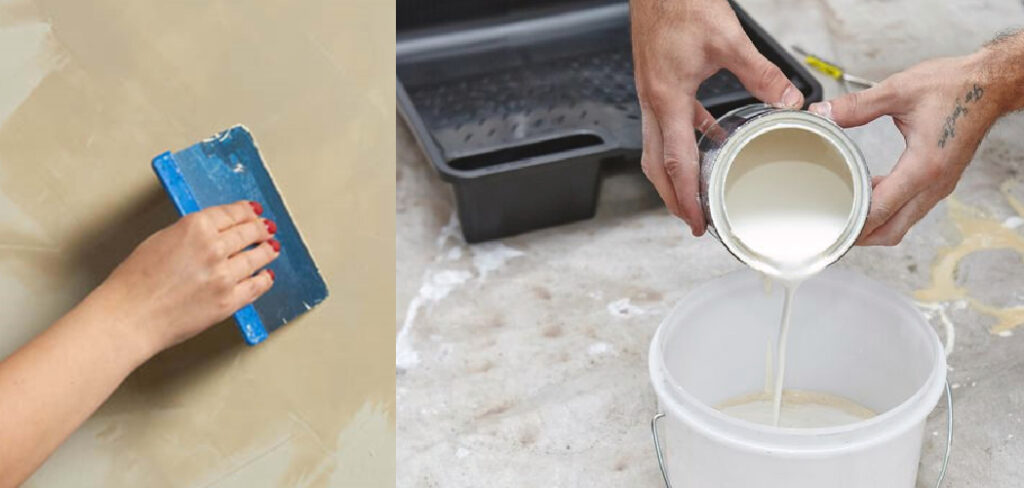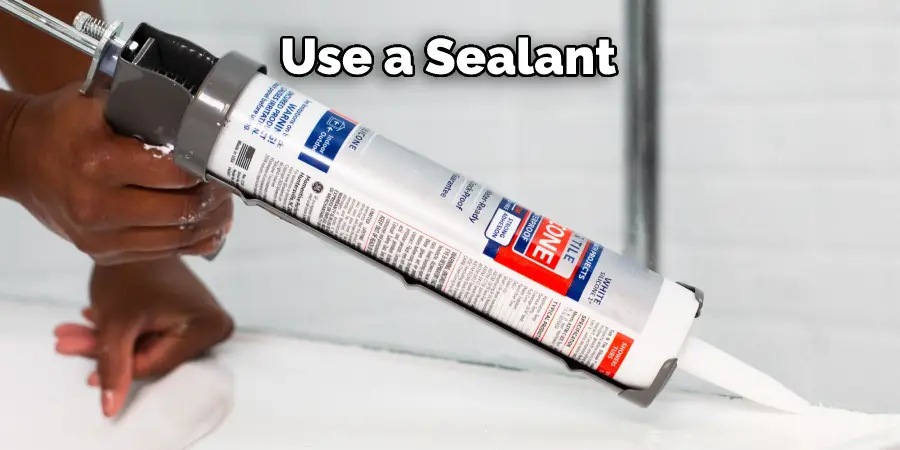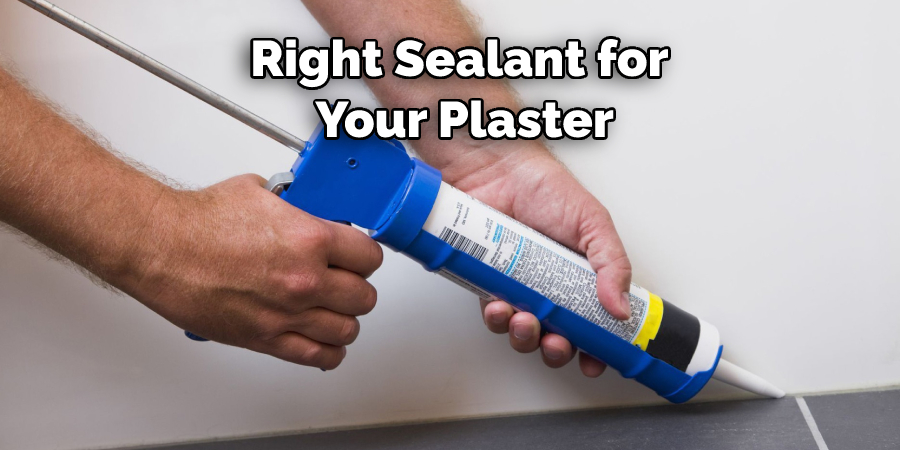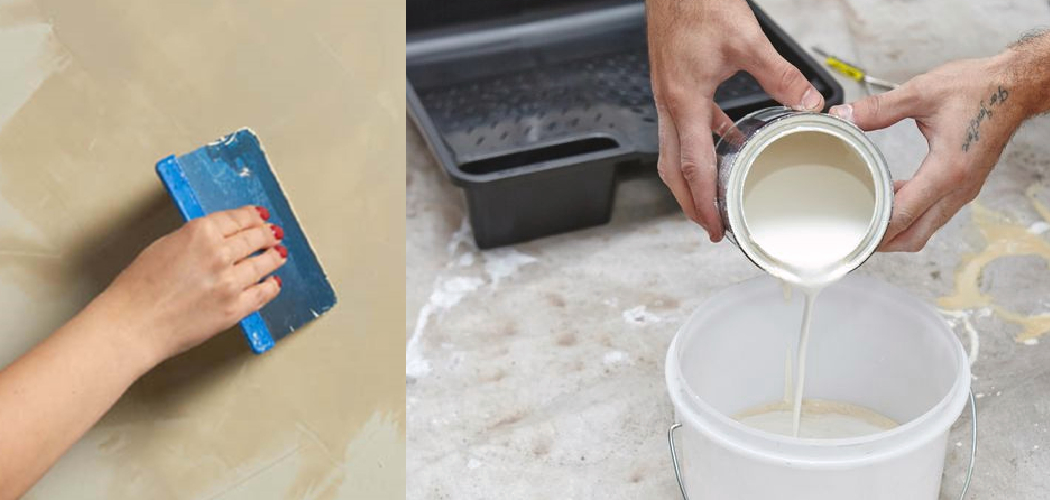If you have ever tried to plaster a wall and failed, don’t worry; you’re not alone. Many people find the plastering process difficult and time-consuming, but with the right tools and techniques, it can be a breeze. In this post, we’ll show you how to seal plaster and make your walls look beautiful and polished. Then, read on for tips and tricks!

What Is Plaster and How Is It Used in Construction Projects?
Plaster is a material used to coat the interior walls of homes and other buildings. It is made from a mixture of water, lime, sand, and clay, which is then poured into molds or sprayed onto surfaces. Once it dries, plaster becomes hard and durable, providing a protective barrier against fire, insects, and weather damage.
Plaster has been used in construction for thousands of years and remains a popular choice for new construction and renovations. Thanks to its versatility and durability, plaster is an ideal material for both residential and commercial applications.
Why Might You Need to Seal Plaster?
Plaster is a popular construction material that has been used for centuries. It is made from a mixture of lime, sand, and water, and it is usually applied to walls and ceilings in a thin layer. Not only is plaster relatively inexpensive, but it is also easy to work with and highly durable. However, over time, plaster can become stained or damaged, and it may require sealing to protect it.
Plaster sealers are available in various formulations and can be applied easily with a brush or roller. In addition to protecting the surface of the plaster, sealing can also help prevent mold and mildew from developing. As a result, sealing is an important part of maintaining plaster walls and ceilings.
How to Seal Plaster in 5 Simple Ways
Plaster is a material that is often used in construction projects. It is applied in a thin layer over walls and ceilings to create a smooth, finished surface. In some cases, it is also used to create decorative elements. When working with plaster, it is important to seal it properly to protect it from moisture and other damage. There are a few different ways that you can seal the plaster:

1. Use a Primer
This is the best option if you are working with new plaster or the old plaster is in good condition. Applying a primer will help to create a smooth surface for the paint to adhere to and will also help to seal the plaster.
2. Use a Sealant
If you are working with existing plaster, it is important to seal it before painting. This will help create a smooth surface and prevent the paint from peeling or flaking. There are a variety of sealants available on the market, so be sure to choose one that is compatible with your type of plaster.
3. Use Paint
You can also use paint as a sealant for plaster. It is a good idea to use a primer before painting the plaster. This will help the paint to adhere better to the surface. Once the primer is dry, you can apply a coat of paint to the plaster. Make sure to let the paint dry completely before using the area.
4. Use a Varnish
Another option is to apply a varnish to the surface of the plaster. This will provide a layer of protection against moisture and dirt. Varnishes come in both water-based and oil-based formulas. Water-based varnishes are easier to apply and clean up, but they may not be as durable as oil-based varnishes.
To apply a varnish, first, make sure the plaster is clean and dry. Then, apply a thin layer of varnish with a brush or roller. Allow the varnish to dry completely before applying a second coat.
5. Use Wax
Another way to protect plaster surfaces is using wax. This method is best used on surfaces that see a lot of wear and tear, such as floors. Wax creates a barrier between the plaster and whatever is causing the wear and tear, whether it’s foot traffic or furniture. It’s also a good idea to wax surfaces before painting them.
To wax, a plaster surface, start by cleaning the surface with a damp cloth. Then, apply a thin layer of wax to the surface using a clean, dry cloth. Allow the wax to dry for at least an hour before walking on or placing any furniture on the surface. Reapply the wax as needed to maintain the protection.
When you are sealing plaster, it is important to make sure that you follow the manufacturer’s instructions carefully. This will ensure that the sealant is applied correctly and bonds properly with the plaster. If you are unsure about how to apply the sealant, you can always consult with a professional contractor or painter.
That’s it! You’ve now learned how to seal plaster surfaces using varnish and wax. Choose the method that best suits your needs and enjoy your newly protected surfaces!

When to Seal Plaster?
Plaster is a construction material that has been used for centuries to create strong, durable walls. It is made from a mix of lime, sand, and water, which is then applied to a surface to form a hard, smooth coating. Plaster can be painted or left its natural color, and it can be sealed to protect it from moisture damage.
While plaster is not as common as drywall in modern construction, it is still used in some restoration projects. When sealing plaster, choosing the right type of sealer and applying it correctly to achieve the best results is important.
Two main types of sealers can be used on plaster: penetrating and surface sealers. Penetrating sealers are designed to penetrate deep into the pores of the plaster, forming a barrier that helps prevent moisture damage. Surface sealers, on the other hand, form a protective film on the surface of the plaster.
This film helps to repel water and dirt, making it easier to keep the plaster clean. When choosing a sealer for plaster, it is important to consider the intended use of the space. For example, a surface sealer may be the best option if the plaster is exposed to high moisture levels or wear and tear. On the other hand, a penetrating sealer may be sufficient if the space is not likely to see much wear and tear.
How to Repair Damaged Plaster
Plaster is a popular material for walls and ceilings, as it can be easily applied and formed into various shapes. However, plaster is also relatively fragile and can be damaged by impact, water, or temperature changes. Therefore, when the plaster is damaged, it is important to repair it as soon as possible to prevent further damage.
The first step is to remove any loose or flaking plaster from the affected area. Next, use a putty knife to fill in cracks or holes with the joint compound. Once the joint compound is dry, sand the area smoothly and paint over it to match the surrounding plaster.
With a little time and effort, you can easily repair damaged plaster and restore your wall or ceiling to its original condition. Keep reading for more information about how to seal plaster.

How to Choose the Right Sealant for Your Plaster
There are a few things to remember when choosing the right sealant for your plaster. First, consider the type of plaster you have. Smooth plasters can be more difficult to seal than rough plasters. Second, take into account the climate you live in. If you live in an area with high humidity, you’ll need a sealant that can withstand moisture.
Third, think about the color of your plaster. You’ll want to choose a sealant that won’t change the color of your plaster. And finally, consider the level of shine you want. Some sealants will provide a high-gloss finish, while others will give your plaster a more natural look.
By keeping these factors in mind, you can be sure to choose the right sealant for your plaster.
Benefits of Sealing Plaster
Plaster is a popular material for both walls and ceilings. It has a smooth finish that can be painted or left natural. Plaster is also durable and long-lasting. However, over time, plaster can become stained or cracked. Sealing plaster helps to protect it from damage and makes it easier to clean.
In addition, sealing plaster helps to prevent mold and mildew from growing. As a result, sealing plaster is an important part of maintaining a healthy home.
How Often Should You Seal Plaster?
The answer may surprise you. Although it is commonly thought that plaster should be sealed yearly, experts now recommend sealing it every three to five years. The reason for this change is that modern plasters are much more durable than those of the past. They are also better able to resist staining and fading. As a result, there is no need to seal them as frequently.

Of course, if you live in an area with high humidity or if your plaster is regularly exposed to sunlight, you may need to seal it more often. But for most people, sealing every three to five years should be sufficient. So if you’ve been sealing your plaster yearly, there’s no need to continue doing so. Instead, you can save time and effort by sealing it every few years instead.
Conclusion
Sealing plaster is a very important step in creating a finished wall. By taking the time to do it properly, you can avoid having to repair or repaint your walls in the future. We hope this article has helped you understand how to seal plaster and that you can apply these techniques easily to your next project.

